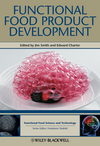Food Product Development: Bars with Almonds
Optimize new creations with almonds, consumers’ favorite bar ingredient.

Diced almonds add a distinct crunch to bars, which is an element that consumers have come to associate with almonds. Sliced almonds lend more of a chewy texture and—according to a recent survey—62% of consumers selected “chewy” as their preferred texture in an ideal bar.
SOURCE: ALMOND BOARD OF CALIFORNIA (WWW.ALMONDS.COM)

SOURCE: ALMOND BOARD OF CALIFORNIA (WWW.ALMONDS.COM)

Chef John Csukor is president and CEO of KOR Food Innovation



Bars have become more popular than ever, thanks in part, to increasing consumer demand for taste and on-the-go convenience that meets snacking needs. As snacking occasions grow, so do opportunities for bar product formulators to connect with consumers and anticipate what kinds they will be looking for next.
Bars typically are segmented into three primary categories of manufacturing: baked, dough-based bars and heat or molten-pressed. When developing one of the three bar formulations mentioned here, there are three additional key components to keep in mind: texture, taste and transform. These labels define the types of challenges manufacturers come up against when formulating new bar products.
Almonds in their whole natural form lend a definitive snap and crunch to a bar’s texture. They also add a visually appealing, premium image, which is identifiable as a standard of high quality. Last but not least, transparent packaging can showcase the whole form and capture consumer interest prior to purchase.
Almond butter can be used as a clean, label-friendly binder that also will bring a nutty creaminess to the other flavors in each bite. It’s a smooth way to boost a bar’s protein content and keep consumers satisfied. In other forms, diced almonds add a distinct crunch to bars, which is an element that consumers have come to associate with almonds. Sliced almonds lend more of a chewy texture and—according to a recent survey—62% of consumers selected “chewy” as their preferred texture in an ideal bar.1
When looking to deliver on taste, almonds rise to the occasion with an intriguingly subtle flavor. Whether natural, blanched or roasted, almonds complement a variety of flavor and spice combinations. Savory and spiced bar formulations are an emerging trend and almonds—with their familiar, popular appeal—help introduce these new flavors to consumers.
In fact, when asked to formulate their ideal bar, consumers in a recent survey selected almonds as the top nut for inclusion, and granola, dark chocolate, oats, coconut and strawberry followed closely behind.1 Of the consumers who chose almonds as an ingredient in their ideal bar, “taste” (71%) was the number one reason, followed by “heart healthy” (56%) and to “add protein” (52%).
Power to Transform
With so many bar products on the markets, formulators are turning to everything from vegetables such as kale and broccoli, to meats like lamb and bison. These ingredients bring their own taste and texture challenges as well. That’s when the semi-sweet and natural flavor of an almond can help transform bitter or strong flavors to make each bite palatable and satisfying.
A curried nut dough-based bar can be made approachable for the wary consumer due to large pieces of identifiable almonds. A spicy chili crunch bar can be made understandable with slivers of the ever-so-recognizable sliced almond. In an Almond, Cherry and Blueberry Bar, almonds’ neutral qualities balance sweet, fruity flavors and give texture to the soft berries.
On the sweet side, chocolate is the only other ingredient that tied with almonds for first place in the overall most popular bar ingredients list. This classic flavor combination is more popular than ever, and almonds are the nut most associated with chocolate.2 Chocolate can be smooth, creamy and slightly bitter. It contrasts nicely with a roasted, diced almond that lends crunch, texture and robust flavor to the pairing.
A key factor in the development of almost any product is the successful application and balance of sweet and savory components. However, savory spans beyond just salty foods! Over time, savory flavors and spices (that were previously obscure) have become widely accepted as normal. They now permeate the snack and bar market as well.
During the last decade, you can see this profound flavor change in what I call a “local to global market movement.” From North Africa to the Mediterranean, and from South America to Eastern Europe, we see so many cultures revere the almond and use it with pleasure and great satisfaction in both savory and sweet applications.
In foodservice, globally inspired dishes and restaurant concepts have opened consumers’ palates to new flavors, and innovation certainly is not lost on the snack market. Chefs everywhere enjoy the almonds’ ability to transform a world of indigenous flavors into an approachable snack that consumers will crave.
According to the recent survey mentioned earlier, the top five benefits consumers seek in their “ideal bar” are: great tasting (48%) high protein (36%), high fiber (36%), satiety (32%) and low calories (27%)1
With their proven satiety, 6g of power-packed protein and 4g of fiber per one-ounce serving,* almonds are a multi-functional ingredient that formulators can take advantage of for both their nutritional qualities and great crunch. Through their texture and great taste, almonds can transform a concept into a cohesive product with their unlimited versatility, seemingly endless forms and familiar, unique flavor.
*One serving of almonds (28g) has 13g of unsaturated fat and only 1g of saturated fat.
(1) US Bars Exploratory Study, Sterling-Rice Group, September 2014.
(2) 2013 North America Consumer AAU.
Looking for a reprint of this article?
From high-res PDFs to custom plaques, order your copy today!











